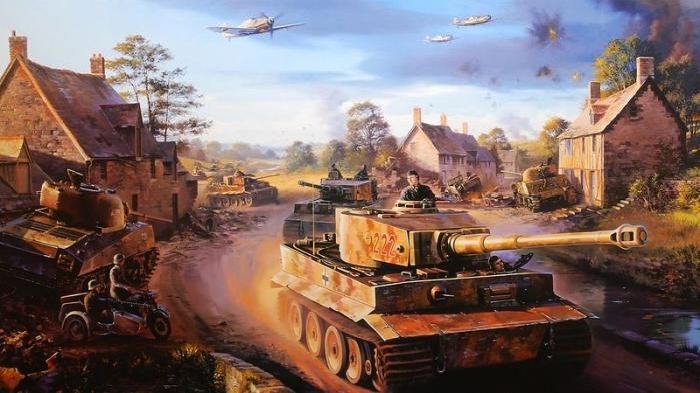|
|
Tank Drawing
|
Many sources imply that Leonardo da Vinci and H.G. Wells in some way foresaw or "invented" the Tank. Da Vinci's late 15th century drawings of what some describe as a "tank" show a man-powered, wheeled vehicle with cannons all around it. The machines described in Wells's 1903 short story The Land Ironclads are a step closer, in being armour-plated, having an internal power plant, and being able to cross trenches. Some aspects of the story foresee the tactical use and impact of the tanks that later came into being. However, Wells's vehicles were driven by steam and moved on Pedrail Wheels, technologies that were already outdated at the time of writing. After seeing British tanks in 1916, Wells denied having "invented" them, writing, "Yet let me state at once that I was not their prime originator. I took up an idea, manipulated it slightly, and handed it on." It is, though, possible that one of the British tank pioneers, Ernest Swinton, was subconsciously or otherwise influenced by Wells's tale.
The "caterpillar" track arose from attempts to improve the mobility of wheeled vehicles by spreading their weight, reducing ground pressure, and increasing their adhesive friction. Experiments can be traced back as far as the 17th century, and by the late nineteenth they existed in various recognizable and practical forms in several countries.
It is frequently claimed that Richard Lovell Edgeworth created a caterpillar track. It is true that in 1770 he patented a "machine, that should carry and lay down its own road", but this was Edgeworth's choice of words. His own account in his autobiography is of a horse-drawn wooden carriage on eight retractable legs, capable of lifting itself over high walls. The description bears no similarity to a caterpillar track.
The first combinations of the three principal components of the Tank appeared in the decade before World War One. In 1903, a Captain Levavasseur of the French Artillery proposed mounting a field gun in an armoured box on tracks. A Major in the British Army's Mechanical Transport Service suggested fixing a gun and armoured shield on a British type of track-driven vehicle. In 1911, a Lieutenant Engineer in the Austrian Army, Günther Burstyn, presented to the Austrian and Prussian War Ministries plans for a two-man tank with a gun in a revolving turret. In the same year an Australian civil engineer named Lancelot de Mole submitted a basic design for a tracked, armoured vehicle to the British War Office. In Russia, Vasiliy Mendeleev designed a tracked vehicle containing a large naval gun.
|
|









